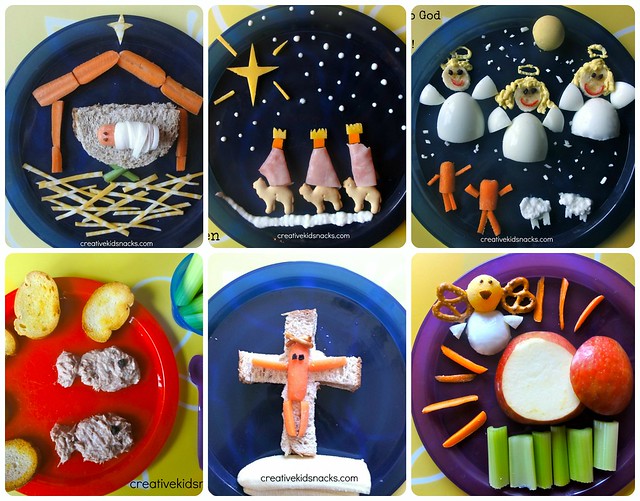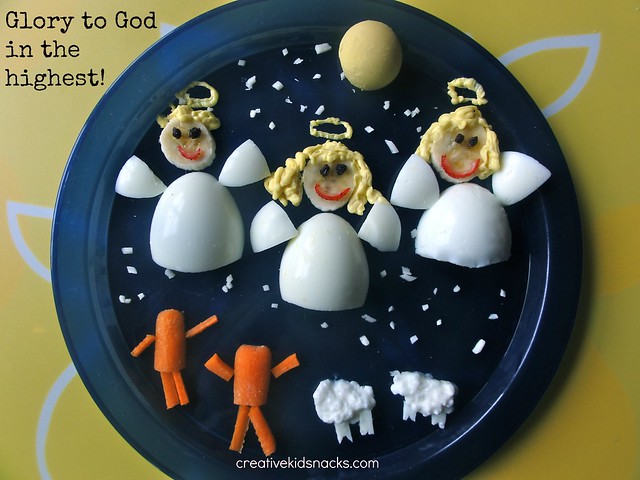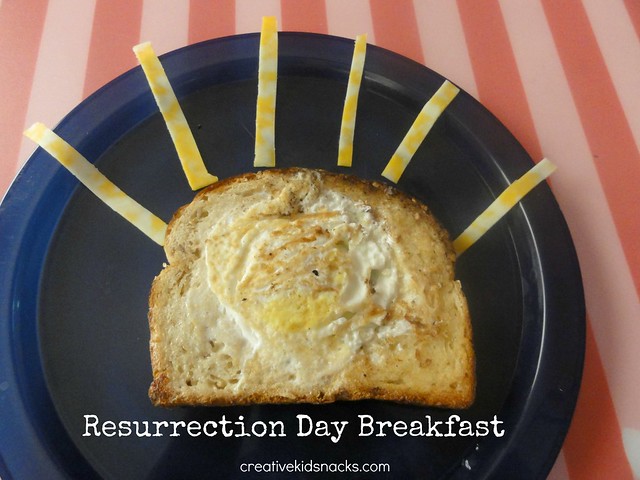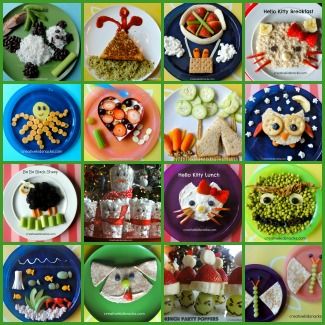Easter is coming, and I love the idea of combining meal time with teaching and learning time. Teaching Bible stories is especially important in our family, and, with Easter coming up, I thought I would put together a post featuring snacks designed to tell the story of Jesus. I plan on making these snacks for my kids during the month of April this year in order to serve as a time of remembering Jesus’ life and what He came to do on earth.
Note: Some may find it difficult to wrap their mind around the idea of portraying Bible stories with food. It may appear irreverent or give the impression that the stories of the scriptures are somehow being reduced to a plate of food. The reason I have prepared these little plates for my girls in the past is to celebrate the Bible. We love to talk about Bible stories and use lunch time as an opportunity to learn and re-read them. It is because I love my Lord Jesus that I include His story in the creative snack time. His story is the best of all, and these dishes are meant to celebrate it.
Click on each title or picture to read all about how to make each snack. I will share some ideas of what to do to expand on each story portrayed in each photo.
Jesus’ Birth
- Read Jesus’ birth story in Luke 2
- Sing “Away in a Manger”
- Set up a nativity scene or act out the story as a family
Angels Announcing Baby Jesus is Born
- Read the story in Luke 2 (verses 8-14)
- Sing the song “Angels We Have Heard on High / Gloria”
- Shine flashlights into a dark room and repeat what the angels sang ““Glory to God in the highest heaven, and on earth peace to those on whom his favor rests.”
The 3 wise Men
- Read the story in Matthew 2: 1-12
- Create pictures or 3-D models of gold, frankincense, and myrrh, and learn about why the magi chose to bring those items here.
- Have the kids pick out the offering they might bring if they were to go and visit the new king, baby Jesus.
5 Loaves and 2 Fishes
- Read the story of Jesus performing this miracle in John 6.
- Talk about how the disciples must have felt, what the miracle showed them about Jesus, and some of the things they think the crowds of people might have said as they watched this happen and ate the food.
- Pray and thank God for showing us his supernatural power through miracles like this one.
Jesus on the Cross
- Read the story in Luke 23
- Talk about how Jesus felt as he carried his cross up Calvary’s hill to be crucified.
- Remember the reason that Jesus chose to die (to make a way for our sins to be forgiven and allow us to be able to know and be friends with God and be with Him in heaven when we die). Pray a prayer of thanksgiving and gratitude for this incredible act of love Jesus performed for us.
The Empty Tomb Lunch
- Read the story in Mark 16.
- Talk about how Jesus’ resurrection proved that He was who He claimed to be.
- Have the kids re-tell this story as if they were a guard. (The guards collapsed with fear when they saw the angels).
Resurrection Day Breakfast
- Read the story (same as above)
- Use the questions provided in the post on Resurrection Day Breakfast to talk through this story with the kids. (Very interesting questions!)
- Sing an Easter song about Jesus being alive.
If you enjoyed these ideas, you may also like our Resurrection Eggs. These are 4, super-easy special eggs to make as a family when you are coloring Easter eggs. There are directions on how to make each of the 4 eggs, as well as how to teach the significance of each egg as it represents part of the Easter story. Check it out!
Also, check out our other cute Easter Snacks in this collection!











nothing of the ontological sttaus of “the truth” or “the principle.” We may for that reason call this the epistemological interpretation. The more ambitious, and also for some the more appealing, interpretation attempts, on the other hand, to give an existential priority to “the truth” or “the principle”: it is no longer a mere epistemological condition, but a truly ontological entity (permit me to use this troublesome word) which in some way infuses the potential knower, so as to make him capable of knowing the truth. Not only an ontological entity: but also a self-conscious and self enacting one. Otherwise we can very well fancy that it were nothing but Energy. Some prefer calling it God, some prefer calling it Geist: the name matters not. At the heart of this ontological interpretation of the proposed view seems to be an urge to see the self as part of a larger self: the self is “enabled” to know not because of some past training or experience (all which seems to point back to the self–its will in particular–as the ultimate cause), but because of a prior self, a larger self, that has realized its inherent capability to know in this particular instance, viz. through this particular self. On the first interpretation, the self need not submit to anything; but on the present one, it is already (in a sense) in submission to that larger self. Karl Barth, inspired by a reading of St. Anselm, came to recognize that the ontological must be prior to the epistemological. God is, and man can only start thinking about God by putting himself already in God. Yet in a way his impassioned arguments in the Church Dogmatics for this point seems to intimate little more than the common observation that “If you believe, you believe; if not, no one can lead you thereto by arguments.”Of course, the broader thought that the capacity to know always presupposes (or requires) something prior has long been a major theme in philosophy. The Holy Trinity of Hegel, Husserl and Heidegger all play with this thought in one way or another. The hard part is, nevertheless, to describe clearly and meaningfully what that “prior” is (so for instance, what is Sittlichkeit? or Horizon? or Sein?) What, moreover, is the relationship between my little self and that “prior,” and how am I to “know myself” in relationship thereto, and live in the light, or pale, of it?If 倉海君 meant to favor the ontological interpretation (and I think he did), echoed in zeke’s allusion to the notion of Emanation in antiquity, it may be proper to say, then, that they take the injunction “Know Thyself” not as an injunction to know the peculiarities of the little self, as are frequently and meticulously investigated by psychological tests in pop magazines; but as an injunction to look beyond the self and to see it–to recognize it–in the light or pale of that larger self. To know thyself becomes to know the limits of an isolated, unencumbered self (to adopt Sandel’s nice phrase against Rawls): to know that there is more to know, and more urgently to be known, than the vagaries of this I. On a day to day level, this may point to one’s friends and relatives, communities, etc.; more elevatedly, it may point to transcendence, the desire to reconnect oneself to the Beyond and the Before, and the aspiration to look back, from that position, at this humble little self. Some say that this desire is deeply rooted in the complicated neural network of human beings, the complexity allowing them to enter trance experiences, the remnant–or recollection–of which well sedimented as the desire of transcendence in certain moments of everyday life. But for the present discussion, let me go no further into this controversial subject.
記得我在舊作中已提及 認識你自己 (Γνώθι σεαυτόν) 這不單是共濟會 更是古希臘哲人 靈知派信徒(Gnostics) 甚至是 致知誠意 ( 大學 ) 自明誠 ( 中庸 )的儒者所共同分享和珍惜的神秘經驗 或許可以說 早在二千多年前 藉着一種美妙不可名狀的神秘經驗在各地智者心中逍遙無礙的流動 全球化 已在精神層面上圓滿地實現了 正如在前幾天的討論所言 既然沒有上下文參考 認識你自己 便可以有多重演繹 但我相信這是關於中外上古道術的一句秘訣 而事實上 也只有掌握了道術原理者才能正確解釋此語 謎語的作用是什麼呢 就是要一面隱藏 一面展露 老子云 夫唯不知 是以不知 此句如果要注 我會引Franz Hartmann的一段話 “Wisdom, as a principle, is iilenconvabce unless it becomes manifest in the wise, and only the wise are capable to recognise it. A man without knowledge knows nothing. (即夫唯不知 是以不知)It is not man in his aspect as a being without any principle who can know any principle whatever; it is always the principle itself that recognises itself in other forms. Thus, if a person wants to know the truth, the truth must be alive in him; if there is no truth in him, he can perceive no truth, neither within himself nor in external nature.”(In the Pronaos of the Temple of Wisdom, Ch.1)耶穌說 然而 天國既是在你心中 又是在身外 當你悉知自己 你就會得以被悉知 並得知自己原已是永生天父的兒子 倘若你對本我一無所悉 你就是貧無立己之處了 我們只要把這三段話排在一起 便能豁然貫通何謂 認識你自己 了 要認識的所謂 自己 絕不是指其性格 生平 志願 心理狀況等 認識這些沒錯是要緊的 但委實不必勞煩這麼多顯赫的大宗師來傳授這樣粗淺的道理 那個 自己 其實就是另一形式的真理/道/天主/存有……”It is always the principle itself that recognises itself in other forms.”–如果我悉知自己 就是被(神)所悉知 那麼我們悉知的(自己) 不正正就是神麼 說不得的秘密 就在這兒 但不是說人可比擬神 因為”天國既是在你心中 又是在身外” 神亦然 如果我即心 心即神 那麼身(我)外呢 基督的教誨 以我理解就是破除內外物我的二元對立 而歸於一 “我”不是一 而是被”一”所統攝 神所直覺到的 就會存在 所以”被神所悉知” 就是永恆真實的存在 即所謂永生 神殿銘文 認識你自己 也只有像耶穌這種精通秘學的大師才能正確解讀
Hi there your post is very interesting and lovely keep sharing
[url=http://www.wtobrand.com/sbom2.html]財布のコピー 時間を発表しますとても長くてとても長い前、人類はすべて更に赤く双足は歩いています。1人の国王はある辺鄙で遠い田舎の旅行に着いて、路面がでこぼこなため、とても多くてばらばらな石があって、刺すのは彼の足を得ます痛くてしびれます。王宮に帰った後に、彼はおりていっしょに命令して、国内のすべての道はすべて一層のほらに敷きます。彼はこのようにすると思って、自分になって、また彼の人民に幸福をもたらすことができて、みんなを歩かせます時もう受けて痛い苦しみを刺しません。たとえしかし最も国内のすべての牛を殺しますとしても、十分な皮革をも調達しきれないで、費やした金銭、使用する人力、更にはかりしれません。まったくできないが、甚だしきに至ってはまたかなり愚かで、しかし国王の命令なため、みんなも頭を振ってため息をつくことしかできません。1人の聡明な召使いは大胆に国王に提案を出しています:「国王!どうしてあなたは大勢の人を動員して、そんなに多い牛に命を捧げて、そんなに多い金銭を費やしますか?あなたは何は両の小さいほらであなたの足をしっかり包むだけではありませんか?」国王が聞いたのはとても驚いて、しかしもすぐ悟って、そこですぐに命令を取り消して、この提案を新たに採用します。聞くところによると、これは「革靴」の由来です。世界を変えたくて、難しいです;自分を変えて、比較的容易です。全世界を変えるよりも、先に自分の–「自分の双足を包みます」を変えるほうがいいです。自分のいくつかの観念と方法を変えて、外来の侵略を防ぎ止めますで。自分で変えた後に、目の中の世界の自然はすぐ引き続き変えました。[/url]
多分、それlum-tecプッシャーのブライトリングのような洗練された技術を使用します。を見るために、ここを読む方法を使用して作成するブライトリング磁石の接触の密売人にそのアベンジャーシーウルフクロノグラフ腕時計。私は、この概念は、内部のリングを回転させるはずのクラウンの設計に変換することができるかどうかわかっていません、しかし、それは彼らのために良いスタートであるかもしれません。もう一つのアプローチは、ヘビーデューティのガスケットのシステムの1つの地獄を使うことです。この時計の開発として、我々は必然的にlum-tecの賢い解決のより良い考えを得ます。
CHANEL(シャネル)とは何かというと、ココ・シャネルが始めたファッションブランド。元々は帽子の専門店 「シャネル・モード」の創設からスタートしました。どのバッグを買おうか悩むのは、日本女性にとって喜びのひとつ。どんな大きさのエルメスバッグ 偽物を洋服に合わせるかによって、人に与える格好のジャンルが大きく変わってきます。グッチ・シャネル・ヴィトンのファッションブランドを始め、一流バッグはやっぱり安く売っている店がありませんね。アウトレットの値段でなるべくGETしたいものです。ハイブランドを身に着けているとどうしてだか気持ちが落ち着くだけでなく、自分がちょっとしたセレブになれたような気分に。つまりは、内面から満たされているように感じると言われています。安価に入手できるだけでなく、国外の一流ブランドの商品には海外でしか手に入らない物などが数多く揃っているので、そうした珍しい商品も通信販売でダイレクトに注文できます。
一項ごとに作品だけ1種あるいは多種の衰えぬ人気のタブ技術、例えば垂直使用雕刻刀の斜め曲線エッチング術、明るさと同時にアップに際立って飾り物;や透かし雕り技術、必要でまずカッター彫っ彫刻して飾るモデル、更に磨き滑らかな波紋ヤスリ。さまざまな花模様を反映している別のスキルは、例えば「勿忘草」柄の内を見せたエナメルケースエナメル大師非凡な技芸風変わりな黒金ケースは、鉛、銅、銀、硫黄やアンモニア塩の混合物にモデルに象眼して、それからエナメル大師窯に焼き、余分の材料をヤスリで磨き、より滑らかな表面を、植物の図案が現れる。宝石をちりばめ部分、ターコイズとガーネットを体現した芸術家に鮮やかな色を活用する。スーパーコピー時計は1項、靑いエナメル文字盤の黄金のブローチ表には、明るい色の宝石が真に迫っていて演じたみずみずしい花一輪エデンを静かに咲く。
今回出展の19項並外れた骨董表項は皆から厳選コレクションブランドで、を含むヴァシュロン・コンスタンタンの三大経典タブプロセス:彫刻、エナメルと宝石をちりばめ、両方の芸術家の好プレーの最高の解釈も、タブ工芸と自然の美しさを完璧に融合の傑作。
すべての3つのモデルは同じきれいなダイヤルレイアウトを共有して、わずかに小さい数字で(ロジウムプレートまたはレッドゴールド)を適用したちょうど内の鉄道の線路の章のリング(それは旅行に行くための美的か忘れない)。より小さな数字のようですが好きな間の不動産が使われていないが、私はそれを過去の腕時計への背中をエレガントな腕時計をつくるiwcのゴールに話すと思います。それは、要するに、それは全体的なプレゼンテーションの一部としてそのきれいなダイヤルを持っていてうれしいです。
积家堅持日進月歩の革新的な精神を、同時に伝奇潜水表にPolarisの優れた伝統を新しい潜水表シリーズ発売。三種類の異なるスタイル抜群の斬新な内包はそれぞれ、オメガスーパーコピーその中の1項の防水性能1000メートルのケースデザインやコンセプトの斬新な機械式水深計、いずれも出て积家優良な伝統の傑作。本シリーズは画期的なマスターCompressor Diving Proジオグラフィックを搭載し、機械式水深計;そしてマスターCompressor DivingGMTとは時間時計と直径44ミリのマスターCompressor Diving Chronographクロノ腕時計。